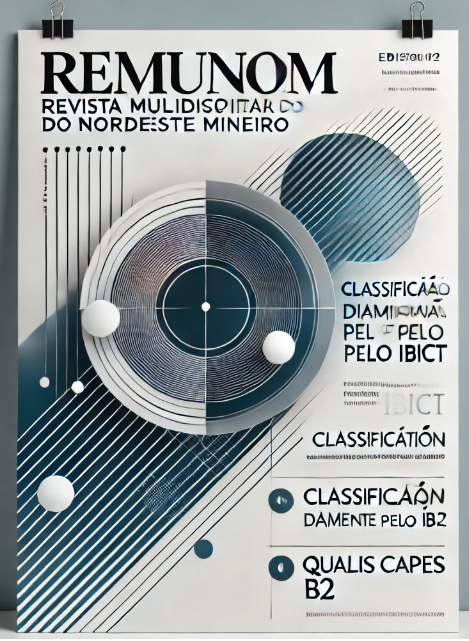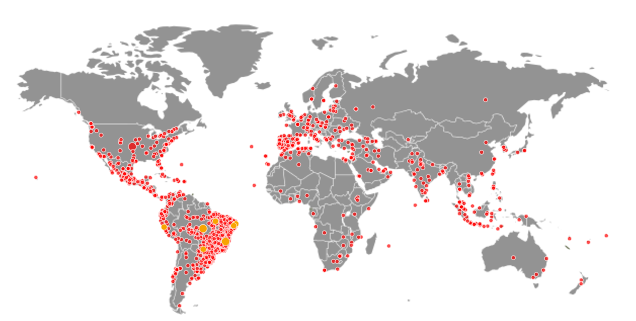ESTÍMULOS VISUALES Y REACCIONES PSICOMOTRICES EN ESGRIMA
DOI:
https://doi.org/10.61164/rmnm.v5i1.3680Palavras-chave:
Equilibrio postural. Estímulos Tácteis. Tiempo de movimiento Tiempo de reacción.Resumo
A esgrima, assim como o tênis, é um esporte unilateral e é praticado com um instrumento mediador (florete, sabre, espada; raquete no tênis), e essas equipes têm pesos diferentes. O florete pesa 0,5 kg; a ripa deve pesar menos de 0,77 kg, geralmente 0,5 kg; e a espada pesa 0,77 kg; A raquete de tênis, por outro lado, pesa cerca de 0,30 kg. Isso envolve um uso unilateral dos músculos do corpo. Os objetivos deste estudo foram avaliar a precisão do movimento e do comportamento motor das respostas sensório-motoras correspondentes a cada estímulo motor a ser aplicado aos estudantes de Educação Física da Universidade Federal do Paraná (UFPR), durante as aulas de Esgrima e realizar uma revisão bibliográfica para comparar as variáveis psicomotoras com as apresentadas na literatura. Essas variáveis estão ligadas a componentes naturais necessários para um atleta, como cognição, percepção, memorização, atenção e raciocínio.
Palavras chave: Equilíbrio postural. Esgrima estímulo tátil. Tempo de movimento. Tempo de reação
Referências
Abernethy B. Training the visual-perceptual skills of athletes: insights from the study of motor expertise. Am J Sports Med 1996 Vol. 24 p. 589-592.
Abernethy B, Wood JM, Parks S. Can the anticipatory skills of exper ts be learned by novices? RQES 1999; 70(3) p. 313-318.
BARR KP, Griggs M, Cadby T. Lumbar stabilization: core concepts and current literature, part 1. Am J Phys Med Rehabil;2005.
BORYSIUK, Z. Pshicomothor reactions in fencing dependence of stimuli type; Brazil; 2008.
BORYSIUK, Z. Factors determining sport performance for fencers at the preliminary and championship stages of their training. In: 5th Annual Congress of the European College of Sports Sciences. Book of Abstracts. Jyvaskyla. 2000, p.386.
BORYSIUK, Z., ZMARZLY, D. Surface electromyography (sEMG) as a research tool of psychomotor reactions. Annales Universitatis Maria Curie-Sklodowska 2005; 60, Suppl 16 (1) p.188-192.
CZAJKOWSKI, Z. Understanding Fencing: the unity and practice. Staten Island: SKA Swordplay Books; 2005.
CZAJKOWSKI, Z. Theory, practice and methodology in fencing. Advanced course for fencing coaches. Katowice: AWF. 2001
DE LUCA, CJ. The use of surface electromyography in biomechanics. J Appl Biomech 1997; 13 p 135-163.
ENOKA, R. Neuromechanics of human movement. Champaign, 3rd ed.: Human Kinetics, 2002.
EVANGELISTA, N. The inner game of fencing: excellence inform, technique, strategy and spirit. Lincolnwood, Illinois: Master’s Press; 2000.
GASPAROTTO, G. DA S. e DOS SANTOS, S.L.C. Produção científica Nacional sobre o Ensino de lutas no ambiente escolar: estado da arte. Conexões: revista da Faculdade de Educação Física da UNICAMP, Campinas, v. 11, n. 4, p. 46-58, out. /dez. 2013.
KAMAL, H.; MONA, M. Attention, Visual Perception and their Relationship to Sport Performance Fencing. Journal of Human Kinetics volume 39/2013.
KANDEL ER, Schwarz JH, Jessell TM. Principles of neural science. New York: McGraw-Hill; 2000.
KELSO J. Dynamic patterns: the self-organization of brain behavior. Cambridge: MIT Press. 1995
KOLBER, M.J.; BEEKHUIZEN, K. Lumbar stabilization: an evidence-based approach for the athlete with low back pain. Strength and Conditioning Journal 2007.
LUCE, R.D. Response times: their role in inferring elementary mental organization. New York: Oxford University Press; 1986.
LUKOVICH I. Electric foil fencing: advanced competitive training. Staten Island: SKA Swordplay Books; 2003.
LUKOVICH I. Fencing. Debrecen: Alfoldi Printing House; 1986.
POULTON, E.C. On prediction in skilled movements. Psychological Bulletin; 54, p. 467-478. 1957
SADOWSKI, J. Studies of selected elements of movement coordination in taekwondo athletes. Biała Podl.: Rocz. Nauk. IWFiS, 1999; v 5, p.37-40.
SALCZENKO, I.N. Dwigazjelnyje wzajmodijestwija sportsmienow. Kijew: Zdorowje; 1980.
SCHACK, T. High speed scanning in movement-based memory - experimental studies in free climbing. J Sport Exercise Phycology 2003; V 25, p. 116-117.
SCHMIDT, R. Motor learning and performance. Champaign: Human Kinetics Publishers, 1991.
STARKES, J.L. Ericsson K.A. Expert performance in sports. Champaign: Human Kinetics, 2003.
SZABO, L. Fencing and the master. Budapest: Corvina Kiado; 1977.
TYSHLER, D.; TYSHLER, G. Fencing. Moscow: Physical Education and Science Press; 1995. WILLIAMS, A.M.; GRANT A. Training perceptual skill in sport. Int J Sport Psychology 1999; 30; p. 194-220.
WELFORD, A.T. Choice reaction time: basic concepts. In: Welford AT. Reaction times (Ed.) New York: Academic Press; 1986. p.73-128.
WELFORD, A. Motor skill and aging. In: Nadeau C, Halliwel W, Newell K, Roberts G, (Eds.) Psychology of motor behavior in sport. Champaign, IL: Human Kinetics, 1980. p.253-268.
Downloads
Publicado
Como Citar
Edição
Seção
Licença
Copyright (c) 2025 Revista Multidisciplinar do Nordeste Mineiro

Este trabalho está licenciado sob uma licença Creative Commons Attribution-NonCommercial-ShareAlike 4.0 International License.




